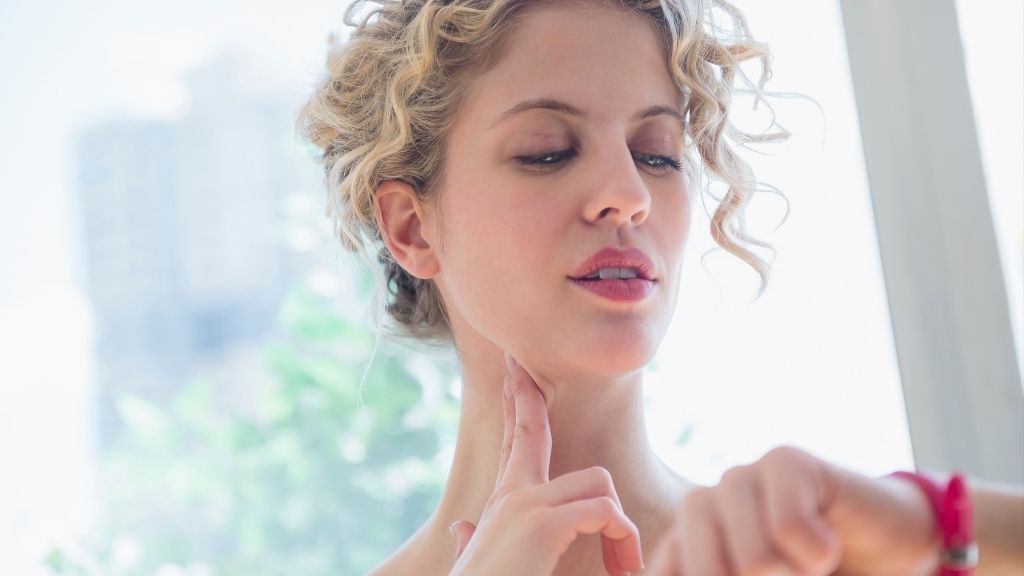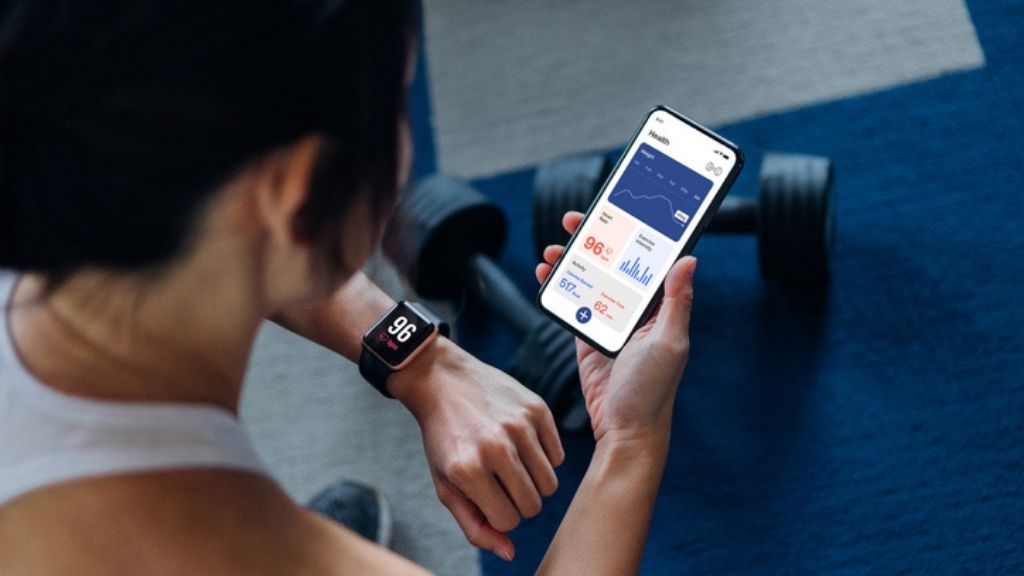If the Heart Beat of a Baby During an Untlasound Beats at 154 Bpm Is It a Boy or a Girl
What is a normal heart rate?
Heart charge per unit is the number of times a person's centre beats per minute (bpm). An boilerplate normal heart rate at rest for adults ranges from lx to 100 bpm, co-ordinate to the Mayo Dispensary.
The resting centre charge per unit of an individual will vary depending on their age, body size, middle conditions and medication utilise, as well as the temperature of the air around them. Emotions tin also affect one'south heart rate; for example, getting excited or scared tin increase the heart rate.
Getting fitter can lower ane'southward middle rate, by making the eye muscles work more efficiently. A well-trained athlete may have a resting heart rate of 40 to 60 bpm, according to the American Heart Clan (AHA). At the meridian of his career, cyclist Miguel Indurain reportedly had a resting heart rate of 28 bpm, according to Harvard Health.
Related: ix new ways to keep your heart healthy
"Your heart is a muscle and only like strengthening other muscles by doing activities, you tin can do the same thing with your center," said Dr. Mary Ann Bauman, an internist at Integris Baptist Medical Center in Oklahoma City.
Tracking your heart rate tin can help you lot monitor your fettle level, and it may help you spot developing health bug if you are experiencing an unusually fast, slow or irregular centre vanquish.
| Historic period | Target heart-rate zone | Max heart rate (Average) |
|---|---|---|
| xx years | 100 to 170 bpm | 200 bpm |
| 25 | 98 to 166 bpm | 195 bpm |
| 30 | 95 to 162 bpm | 190 bpm |
| 35 | 93 to 157 bpm | 185 bpm |
| 40 | xc to 153 bpm | 180 bpm |
| 45 | 88 to 149 bpm | 175 bpm |
| 50 | 85 to 145 bpm | 170 bpm |
| 55 | 83 to 140 bpm | 165 bpm |
| 60 | 80 to 136 bpm | 160 bpm |
| 65 | 78 to 132 bpm | 155 bpm |
| lxx | 75 to 128 bpm | 150 bpm |
Claret pressure vs. heart charge per unit
Some people confuse high blood pressure with loftier center rate. Blood force per unit area is a measurement of the force of the claret against the walls of arteries, while center rate is the number of times your middle beats per minute. You can measure your center rate by taking your pulse, which reflects how often the arteries aggrandize and contract in response to the center beating, according to MedicalNewsToday; middle rate and pulse charge per unit are equal to each other, so the terms are often used interchangeably.
In that location is no direct correlation between blood pressure and heart rate, then having high blood pressure, or hypertension, does not necessarily consequence in having a high pulse rate, and vice versa. Heart rate goes upwardly during strenuous activity, merely a vigorous conditioning may merely modestly increase blood pressure.
How to mensurate eye rate
The easiest places to measure your centre rate, according to the AHA, are:
- wrists
- within of an elbow
- side of the neck
- summit of the foot
For an accurate reading of your pulse rate, put 2 fingers over one of the areas listed to a higher place and count the number of beats in 60 seconds. You tin can also exercise this for xx seconds and multiply by three, which may be easier, Bauman told Alive Science. Note that using your thumb may be disruptive considering sometimes you lot can feel a pulse in the pollex, she said.

Resting centre rate
Your resting heart charge per unit is the number of times your heart beats in a infinitesimal when yous are calmly sitting or lying down. It'due south best to measure your resting heart charge per unit in the morning before yous get out of bed, co-ordinate to the AHA.
For adults 18 and older, a normal resting heart charge per unit is betwixt sixty and 100 bpm, depending on the person's concrete condition and age. For children ages 6 to 15, the normal resting heart charge per unit is between 70 and 100 bpm, co-ordinate to the AHA.
But having a heart rate lower than threescore bpm doesn't necessarily hateful you have a medical problem. Active people oftentimes accept lower center rates considering their eye muscles don't need to piece of work as hard to maintain a steady trounce. Athletes and people who are very fit tin have resting eye rates of 40 bpm or lower.
1's resting eye rate can as well dip below 60 bpm as a event of taking certain medications. "Many medications people have — especially medication for claret pressure, such as the beta blockers — will lower your heart charge per unit," Bauman said.
That said, if it'due south coupled with worrisome symptoms, a depression heart rate may bespeak a problem. " A low heart charge per unit in somebody who is having dizziness and lightheadedness may indicate that they take an abnormality that needs to be looked at," Bauman said. For instance, bradycardia is a status where the heart rate falls too low, typically under 60 bpm; this can be the consequence of bug with the sinoatrial node, which acts as the heart's pacemaker, or impairment to the heart as a result of a centre assail or cardiovascular illness.
Related: Meridian ten astonishing facts about your heart
On the other end of the spectrum, a consistently loftier heart charge per unit can put likewise much stress on the eye and other organs. If a person has a loftier heart rate at residue and is experiencing other symptoms, doctors may demand to examine his or her eye part, Bauman said.
In full general, a resting center rate above 90 bpm is considered loftier, according to Harvard Health. In a 10-yr report of more than 29,000 people, published in 2011 in The Journal of the American Medical Association, those whose centre rates rose from less than seventy bpm to more than 85 bpm over the course of the decade were 90% more likely to have died by the written report'south end, compared to those whose middle rates started and stayed below 70 bpm.
Maximum and target eye rate
Monitoring your eye rate during workout sessions tin can aid y'all determine whether you lot are doing also much or not plenty, the AHA says. When people exercise in their "target heart zone," they maximize the cardiovascular benefits of their workout; that's because, when your center charge per unit is in the target zone, "y'all are pushing the musculus to get stronger," Bauman said.
A person'due south target heart rate zone is between 50% and 85% of their maximum center charge per unit, according to the AHA. Nigh normally, maximum heart charge per unit is calculated by subtracting your age from 220. Then for a 30-year-former person, for instance, the maximum centre rate would be 190 bpm: 220 – 30 = 190.
The target zone for a 30-year-old person would therefore prevarication between 50 and 85% of 190:
- 50%: 190 x 0.50 = 95 bpm
- 85%: 190 x 0.85 = 162 bpm
For a sixty-year-one-time person, the target zone would exist between 80 and 136 bpm.
You can either manually calculate your heart rate during practise or use heart rate monitors that wrap around the chest, or are included in sports watches. However, that'southward not to say that exercising without getting the eye rate upward to the target zone has no benefit, Bauman said. It but doesn't challenge the center to its fullest extent.
Related: Middle rate monitors: How they work

Lowering a rapid heart rate
Center rates can fasten due to nervousness, stress, dehydration and overexertion. Sitting down, taking tiresome, deep breaths and rehydrating tin assistance lower your heart rate in these instances.
In the long-term, maintaining a regular exercise schedule can help to lower — and so maintain — your resting heart rate over time. Smoking cigarettes raises the middle rate, in part due to nicotine's effects on the circulatory organisation's blood vessels, so quitting smoking can also help lower i's centre rate to a good for you range, according to Harvard Wellness.
To lower your heart rate in a healthy mode after practice, the AHA and Mayo Clinic recommend that you "cool down" by continuing to move for almost v to 10 minutes, simply at a slower stride and reduced intensity compared with the rest of your conditioning. For case, Mayo suggests the following cool down activities:
- To cool down after a brisk walk, walk slowly for five to 10 minutes.
- To absurd down afterward a run, walk briskly for five to 10 minutes.
- To absurd down later pond, swim laps leisurely for five to x minutes.
Cooling downwards subsequently a conditioning helps gradually bring your middle rate down to pre-exercise levels, thus helping you avoid potential feelings of dizziness or nausea that can occur when the heart rate falls too apace. It's unclear whether including a cool down in your workout helps to prevent musculus stiffness or soreness later on do, but more than research is needed in this area, co-ordinate to the Mayo Clinic.
Arrhythmia, tachycardia and other weather condition
A number of conditions can affect your heart charge per unit. In general, an "arrhythmia" describes a heart charge per unit that's also fast, too slow or irregular.
While bradycardia describes when the heart rate is too low, tachycardia describes when ane'south heart rate is as well high, which generally ways the resting heart rate exceeds 100 bpm, co-ordinate to the National Institutes of Health. This more often than not occurs when electrical signals in the center's upper chambers fire abnormally.
If the centre rate is closer to 150 bpm or college, it is a condition known as supraventricular tachycardia (SVT). In SVT, the electrical system that controls heart charge per unit becomes dysfunctional. This generally requires medical attending.
Additional resource
- Watch "What is a Center Wellness Check?" from the Heart Foundation
- Read nearly "3 Kinds of Exercise That Boost Heart Health" from Johns Hopkins Medicine
- Learn "How to Feel Your Centre Beat" with SciShow Kids
Editor'south annotation: This article was last updated on Dec. thirteen, 2021.
Boosted reporting past Kim Ann Zimmermann, Live Science contributor.
Originally published on Live Scientific discipline.
Source: https://www.livescience.com/42081-normal-heart-rate.html
0 Response to "If the Heart Beat of a Baby During an Untlasound Beats at 154 Bpm Is It a Boy or a Girl"
Post a Comment